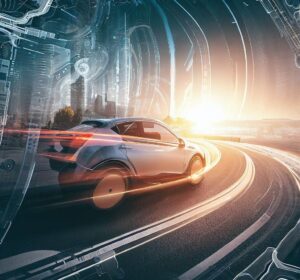In our rapidly evolving world, the future of urban mobility holds immense potential for transforming how we move within our cities. With the expertise of leading experts in the field, we delve into the challenges and opportunities that lie ahead, shaping sustainable and efficient transportation systems that benefit both individuals and the environment.
Let’s explore! 🌍🚗💨
1️⃣ Embracing Shared Mobility: The Rise of Collaborative Transportation 🤝
The experts unanimously agree that shared mobility will play a pivotal role in the future of urban transportation. Driven by the success of innovative services like ride-hailing, bike-sharing, and car-sharing, collaborative transportation models offer the promise of reducing traffic congestion, optimizing vehicle utilization, and minimizing environmental impact. 🚕🚴♀️🛴
2️⃣ Electrification and Zero-Emission Vehicles: Greening the Urban Fleet 🌿⚡️🚙
With the urgent need to reduce carbon emissions and combat climate change, electrification emerges as a powerful tool. Electric vehicles (EVs) are gaining momentum as a sustainable transportation solution, and our experts emphasize the importance of expanding charging infrastructure, incentivizing EV adoption, and fostering research and development to enhance battery technology. By transitioning to zero-emission vehicles, we pave the way for cleaner and quieter urban environments. 🌍🔌🚗
3️⃣ Intelligent Transportation Systems: Navigating Smarter Cities 🌆🧠🚦
The integration of advanced technologies and data-driven solutions is revolutionizing urban mobility. Through intelligent transportation systems, our experts envision a future where real-time traffic management, connected vehicles, and smart infrastructure work in harmony to optimize transportation efficiency and enhance safety. By leveraging the power of data and connectivity, we can build smarter cities that seamlessly move people and goods. 📡🚗📊
4️⃣ Micromobility: Small Vehicles, Big Impact 🚲🛴🌱
Micromobility, represented by bicycles, electric scooters, and other compact vehicles, has gained remarkable popularity in recent years. Our experts highlight the importance of integrating micromobility options into urban transportation networks. By providing affordable, convenient, and eco-friendly alternatives for short-distance travel, micromobility can reduce reliance on cars, alleviate congestion, and promote healthier lifestyles. 🚲🌿🚶♀️
5️⃣ Future Innovations: From Autonomous Vehicles to Hyperloop 🚗🤖🚄
As we look to the future, our experts envision exciting innovations that will reshape urban mobility. Autonomous vehicles hold great promise for increasing safety and efficiency, while emerging technologies like flying taxis and hyperloop systems push the boundaries of transportation possibilities. By embracing these advancements and fostering collaboration between industry, academia, and policymakers, we can unlock new realms of mobility. 🌌✨🚀
In conclusion, the field of Future Urban Mobility presents us with a remarkable opportunity to shape cities that are sustainable, efficient, and people-centric. With the insights from our esteemed experts, we are inspired to embrace shared mobility, electrification, intelligent transportation systems, micromobility, and future innovations. Together, we can create a future where transportation is not only efficient but also environmentally friendly, inclusive, and enjoyable for all. 🌟🚀🌍
Haptic solutions can play a significant role in enhancing the future of urban mobility in several ways. By incorporating haptic feedback into transportation systems, we can create more intuitive and engaging user experiences, improving safety, efficiency, and overall satisfaction. Here’s how haptic solutions can be helpful:
1️⃣ Enhanced Vehicle Interactions: Haptic feedback can provide tactile cues that enhance the interaction between drivers and vehicles. For example, haptic alerts can warn drivers of potential dangers, such as lane departures or proximity to pedestrians, helping to prevent accidents and promote safer driving practices. Additionally, haptic interfaces can simplify the operation of complex vehicle features, ensuring drivers can focus on the road while accessing necessary controls.
2️⃣ Immersive Navigation Systems: Haptic feedback can enrich navigation systems by providing tactile guidance to drivers. Through subtle vibrations or directional cues, drivers can receive real-time haptic feedback on upcoming turns, lane changes, or traffic conditions, enhancing their situational awareness and reducing the reliance on visual distractions. This improves the overall navigation experience and contributes to safer and more efficient journeys.
3️⃣ Pedestrian Safety: Haptic solutions can also benefit pedestrians by providing them with tactile feedback to alert them to potential hazards. For example, crosswalks equipped with haptic signals can convey information to visually impaired individuals through vibrations or texture variations, allowing them to navigate intersections safely. Haptic cues can also warn pedestrians about approaching vehicles or obstacles, reducing the risk of accidents and enhancing pedestrian safety in urban environments.
4️⃣ Multimodal Transportation Integration: Haptic feedback can facilitate seamless transitions between different modes of transportation. For instance, haptic interfaces in public transportation systems can guide passengers by providing tactile feedback for navigation, ticketing, or boarding processes. This simplifies the user experience, encourages the use of public transportation, and promotes multimodal connectivity within cities.
5️⃣ Accessibility and Inclusivity: Haptic solutions can contribute to creating more inclusive transportation systems. By incorporating haptic interfaces into vehicles, public transportation, and infrastructure, we can cater to the needs of individuals with sensory impairments, ensuring they can access and navigate urban mobility options with greater ease and confidence. Haptic feedback can provide valuable information that complements visual and auditory cues, making transportation more accessible for everyone.
Haptic R&D Consulting, with their expertise in haptic technologies and user-centered design, can provide valuable insights and solutions for integrating haptic feedback into future urban mobility systems. Their deep understanding of haptic interfaces, sensory perception, and human-machine interaction can help optimize user experiences, improve safety, and drive innovation in the field of transportation. Together, we can harness the power of haptics to create a more seamless, engaging, and sustainable future of urban mobility.